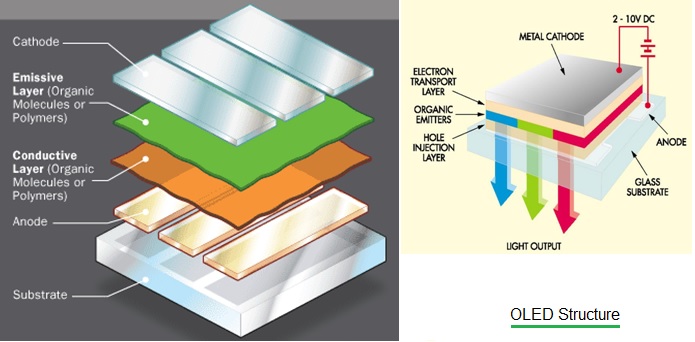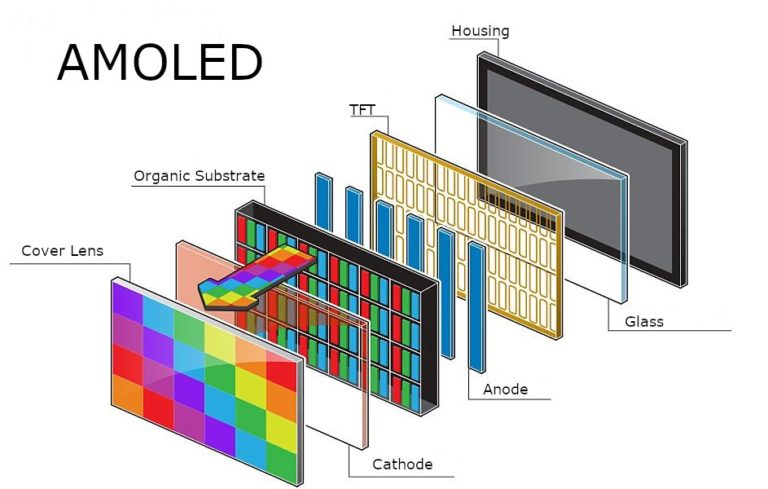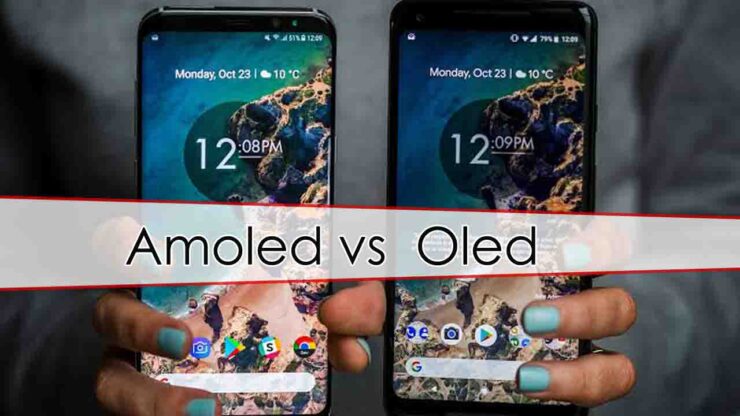The use of display technology in electronic devices has observed extraordinary advancements, and two popular options that have gained widespread recognition are OLED (Organic Light-Emitting Diode) and AMOLED (Active-Matrix Organic Light-Emitting Diode). These technologies have transformed the way we perceive and interact with screens, be it on our smartphones, televisions, or other devices. In this article, we will explore the differences between OLED and AMOLED, their advantages, disadvantages, and help you understand which is better suited for your specific needs.
Understanding OLED
What is OLED Technology?
OLED a display technology that operates organic compounds to emit light when an electric current is functional. Unlike traditional LCD (Liquid Crystal Display) screens that need a backlight, each pixel in an OLED display emits its own light. This results in vibrant colors, deep blacks, and an infinite contrast ratio.

How does OLED work?
In an OLED display, each pixel contains three sub-pixels: red, green, and blue. When a voltage is applied to these sub-pixels, they emit light of their respective colors. Through adjusting the intensity of each sub-pixel, a wide range of colors can be displayed. Furthermore, OLED displays offer fast response times and wide viewing angles.
Understanding AMOLED
What is AMOLED?
AMOLED is a variation of OLED that includes an active-matrix backplane, which helps in controlling individual pixels more accurately. The “A” in AMOLED stands for “Active-Matrix,” referring to the thin-film transistors (TFTs) used to control the existing flow to each pixel. This technology enhances the overall performance of OLED displays.

How does AMOLED work?
AMOLED works in a similar way to OLED but with the added benefit of active-matrix integration. The active-matrix backplane ensures that each pixel is individually organised, allowing for faster refresh rates and better image quality. This results in developed visibility, especially in bright outdoor environments.
Differences between OLED and AMOLED
1. Manufacturing process
OLED displays are relatively easier to manufacture compared to AMOLED displays. AMOLED panels require additional TFT layers, which make them more complex and expensive to produce.
2. Display quality
Both OLED and AMOLED offer excellent display quality, but AMOLED tends to have higher brightness levels, making it more suitable for outdoor usage.
3. Power consumption
AMOLED displays are known for their energy efficiency, consuming less power related to outdated LCD screens. OLED displays are also efficient but may consume slightly more power than AMOLED.
4. Lifespan
OLED and AMOLED displays have a limited lifespan, with each pixel gradually losing brightness over time. However, AMOLED displays may experience color shifting more quickly than OLED displays.
5. Cost
Due to the additional manufacturing complexity, AMOLED displays are generally more expensive compared to OLED displays, making them a premium option.
Advantages of OLED
- OLED displays are known for their ability to produce deep blacks, as each pixel can be individually turned off. This results in improved contrast ratios and vivid colors.
- OLED displays have faster response times compared to traditional LCD screens. This makes them appropriate for high-speed content, such as gaming and fast-paced videos.
- OLED displays offer wide viewing angles, allowing you to see consistent colors and contrast even when viewing the screen from different angles.
- OLED panels are incredibly thin and flexible, enabling manufacturers to create curved displays and slim form factors.
Advantages of AMOLED
- AMOLED displays generally have higher brightness levels compared to OLED displays. This makes them more legible and easier to use in bright outdoor environments.
- The active-matrix integration in AMOLED displays improves visibility by providing better control over specific pixels. This ensures that the content remains clear and visible even in sunlight.
- AMOLED displays consume less power compared to traditional LCD screens. This results in improved battery life on devices that use AMOLED technology.
Disadvantages of OLED
- OLED displays are susceptible to burn-in, where static images displayed for extended periods can leave permanent marks on the screen. Manufacturers have implemented various techniques to minimize this issue, but it can still occur under certain circumstances.
- OLED displays may not achieve the same peak brightness levels as some high-end LCD screens. This can impact the visibility in extremely bright environments.
Disadvantages of AMOLED
- The additional active-matrix integration in AMOLED displays makes the manufacturing process more complex and expensive, resulting in higher costs for devices that incorporate this technology.
- AMOLED displays may experience color flowing more quickly compared to OLED displays. Over time, the colors may become less accurate due to the degradation of organic compounds.
Which is Better: OLED or AMOLED?
The answer to this question depends on the specific requirements and preferences of the user. OLED displays excel in color accuracy and deep blacks, making them ideal for applications that demand vibrant visuals. On the other hand, AMOLED displays offer higher brightness levels, better outdoor visibility, and improved energy efficiency. If you prioritize brighter displays and enhanced visibility, AMOLED might be the better choice for you. However, if color accuracy and deep blacks are crucial, OLED should be your preferred option.
Conclusion
OLED and AMOLED are both remarkable display technologies that have transformed the visual experience on various devices. OLED provides excellent color accuracy, deep blacks, and a thin design, while AMOLED offers higher brightness levels, better outdoor visibility, and improved energy efficiency. While choosing between the two, consider your specific desires, such as the usage environment, desired display characteristics, and budget.









Add comment